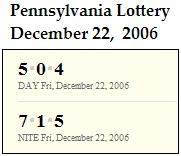|
… Eliot’s Four Quartets has been one of my favourite works of poetry since I was a student….
Of course, a poem doesn’t have a single meaning, especially one as long and complex as Four Quartets. But to me the primary meaning of the poem is about the relationship between time and eternity, which is something maybe of interest to mathematicians as well as to mystics.
Curiously, the clearest explanation of what Eliot is saying that I have found is in a completely different work, Pilgrimage of Dreams by the artist Thetis Blacker, in which she describes a series of dreams she had which stood out as being completely different from the confusion of normal dreaming. In one of these dreams, “Mr Goad and the Cathedral”, we find the statements
“Eternity isn’t a long time”
and
“Eternity is always now, but …”
“Now isn’t always eternity”.
In other words, eternity is not the same as infinity; it is not the time line stretched out to infinity. Rather, it is an intimation of a different dimension, which we obtain only because we are aware of the point at which that dimension intersects the familiar dimension of time. In a recurring motif in the second Quartet, “East Coker”, Eliot says,
Time future and time past
Are both somehow contained in time present
and, in “Little Gidding”,
… to apprehend
The point of intersection of the timeless
With time, is an occupation for the saint
|




